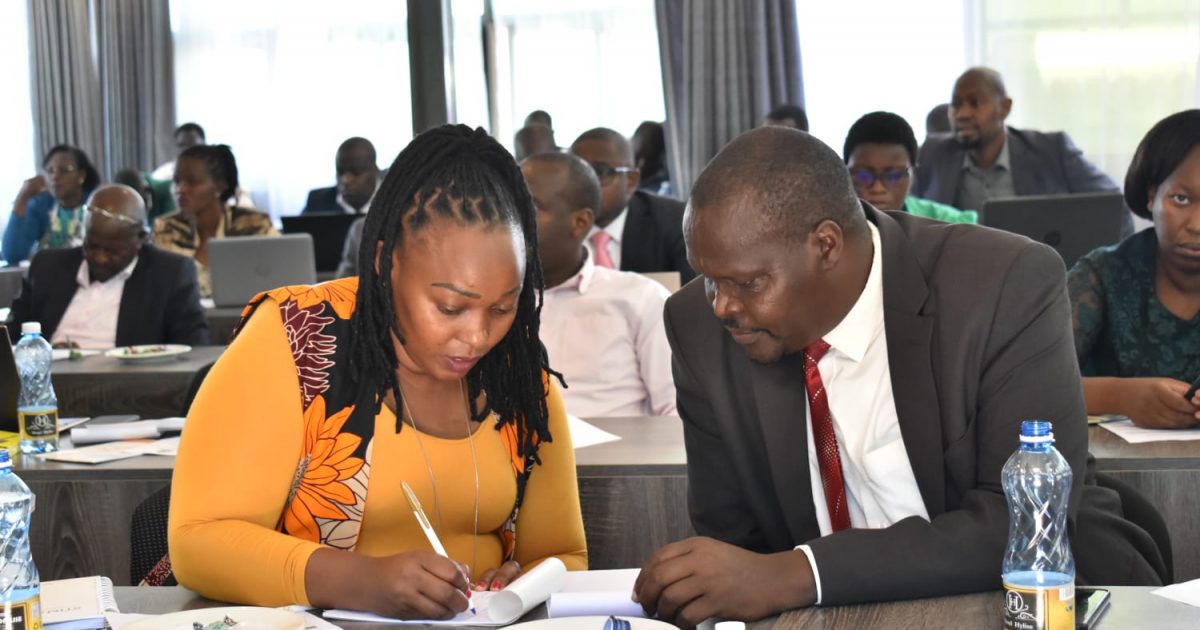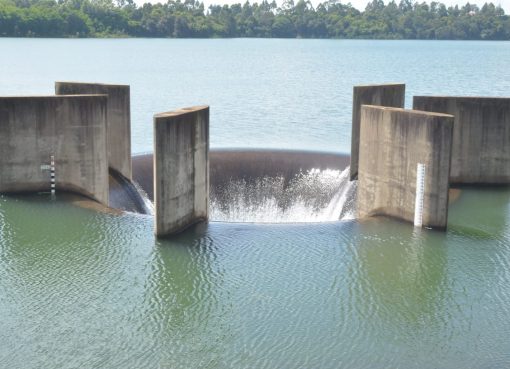The County Government of Nakuru has prioritized development of water infrastructure aimed at fixing the water demand and supply gap so as to increase the number of households accessing clean water.
The County has also announced that it is entering into public-private partnerships aimed at revamping its aged wastewater treatment and sewerage systems.
County Executive Committee Member (CECM) in Charge of Water, Environment, Energy, Natural Resources and Climate Change, Dr Nelson Maara, said the County administration was also undertaking policy, governance and legal interventions, to increase water storage, improve sanitation and food security in the county.
Dr. Maara said as the County endeavours to achieve the right to clean and safe water in adequate quantities, there was need to recognize and implement the requirements of the Constitution of Kenya 2010, Article 43 (1), (b), (c), (d) provision which guarantees reasonable standard of sanitation, freedom from hunger, and safe water in adequate quantities.
Speaking during an induction meeting for water utilities members and members of the County Assembly Committee for Water and Environment, the CECM indicated that fixing the water demand and supply gap will reduce production costs and spur investment and job creation in the sector.
He voiced the County government’s commitment to expanding the scope of water coverage, enhancing sustainability of projects and understanding the role of every stakeholder in water, environment, sanitation and climate change sectors adding that they were offering support to water utilities to eensure proper management of water projects which in turn will translate into good service delivery.
The World Health Organization (WHO) estimates that sub-Saharan Africa loses an equivalent of four percent of its GDP as a result of inadequate water supply and sanitation. Part of this is made up of the heavy disease burden occasioned by diseases linked to water and sanitation challenges.
With households in Nakuru generating about 300 million litres of waste water daily, Dr Maara emphasized the need to put in place a modern and efficient waste water management system which will take into account the recycle and reuse concept and enhance separation of storm water and waste water from residential areas for appropriate filtering and safe disposal.
He expressed concern that most of the waste water ends up in rivers and main water sources downstream, putting residents at risk of contracting waterborne diseases like typhoid, dysentery and cholera.
Dr. Maara said Governor Susan Kihika had pledged to oversee revamping and expanding of the sewerage system in Nakuru city and other towns, including Naivasha, Gilgil and Molo and indicated that plans were in place to expand the sewer systems to other parts of the city, including informal settlements.
“We intend to expand the sewerage system to various estates in Nakuru city which have for long been relying on alternative methods of waste disposal, including septic tanks. We will also upgrade our two existing treatment plants in Kivumbini and Mwariki,” added Dr Maara.
A significant number of estates in the city, including posh ones, are not linked to the sewer system. They include Bismarck, Kenya Industrial Training Institute (KITI), Kiamunyi and Ranges View, which adjoins the affluent Milimani. Only Milimani, Langa Langa, London, the town centre, Racecourse and Freehold estates have access to sewerage services.
Others that are not connected to the main sewer line include Ngata, Mwariki, Baruti, Langa Langa and the informal settlements of Kivumbini, Lake View, Kwa Rhoda, Kaptembwa, Kaloleni and Bondeni.
Dr Maara said among the projects the county government had lined up to alleviate water shortage in Nakuru are the last mile water pipe connectivity to rural households from Itare Dam once its construction resumes and the expansion of Turasha Dam in Gilgil to bolster water supply to Gilgil Sub-County and Nakuru Town.
Chairperson of Water and Environment Committee Ms Rose Chepkoech said her committee will ensure that public water service providers are allocated adequate funds for implementation of the projects and programs.
The chairperson undertook to work with the County Assembly in formulating policies for the water sector that are geared towards improving governance in the management of water in the county.
The county falls short of adequate daily water supply with the demand estimated to be 70,000 cubic metres per day. Data from Nakuru Urban Water and Sanitation Company, NAWASCO, indicates that the current supply stands at 40,000 cubic metres and with the town’s status already elevated to City status partnerships among utilities and other government agencies are crucial to avoid rampant rationing.
The County Government is partnering with Vitens Evides International which is providing technical assistance to the Nakuru Water and Sanitation Services Company Ltd (Nawassco), Nakuru Rural Water and Sanitation Company Limited (Naruwasco) and Naivasha Water, Sewerage and Sanitation Company Ltd (Naivawasco) to reduce non-revenue water from an average of 54 per cent to 20 per cent.
A Non-Revenue Water (NRW) audit revealed that Nawassco, Naruwasco and Naivawasco lose more than half of their treated drinking water to leaks, theft and meter inaccuracies, resulting in monthly losses of over Shs40 million and scarcity of the commodity.
Non-Revenue Water (NRW) refers to water lost through illegal connections, inefficient or rundown supply infrastructure and malfunctioning meters. Water Services and Regulatory Board (WASREB) defines levels of NRW of under 20 per cent as good, 20-25 as acceptable and over 25 per cent as not acceptable.
By Esther Mwangi




